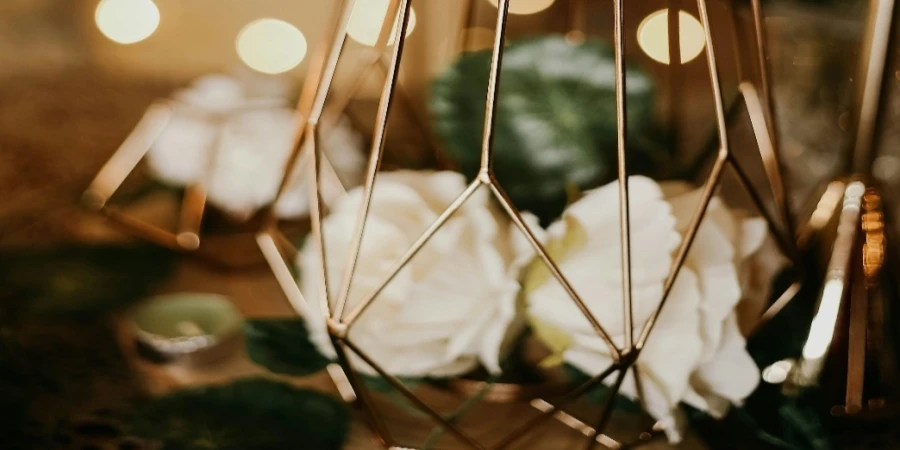Table of Contents
● Introduction
● Market overview
● Different types and their features
● Things to consider when selecting products
● Conclusion
Introduction
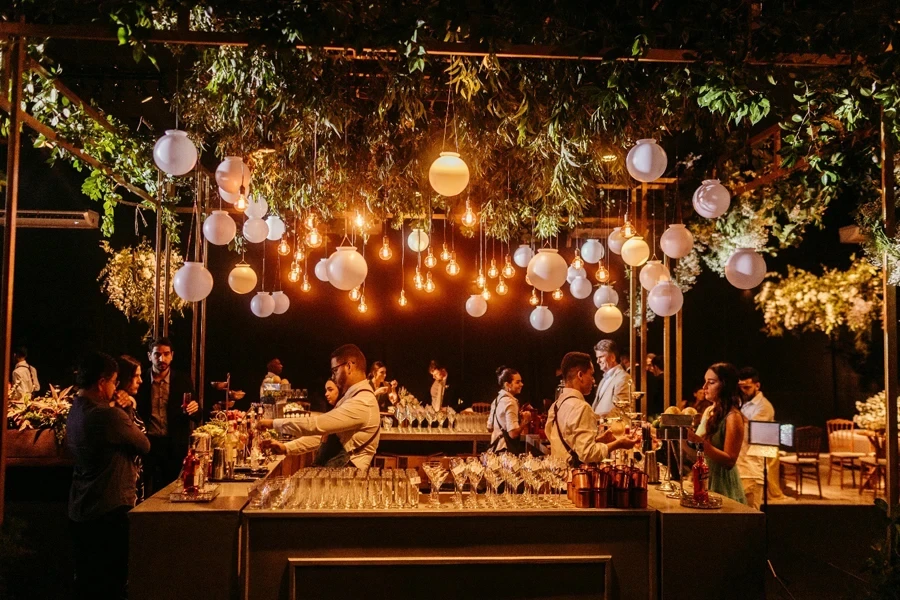
Wedding lighting is a crucial element that can transform a venue and elevate the entire atmosphere of the event. The right lighting not only highlights the meticulously planned details but also sets the ideal mood for the celebration. With a variety of options available, from elegant chandeliers to versatile string lights, choosing the ideal lighting can make a significant difference. Understanding market trends and selecting the appropriate lighting types can help create a memorable and visually stunning wedding. This guide delves into the essentials of wedding lighting, offering insights to make informed decisions for a spectacular event.
Market overview

Market scale and growth
The global decorative lighting market is experiencing significant growth, with the market size projected to increase from USD 113.08 billion in 2024 to USD 156.74 billion by 2029, reflecting a CAGR of 6.75%. This growth is driven by the rising demand for aesthetically pleasing and energy-efficient lighting solutions in both residential and commercial sectors. The increasing popularity of home décor trends on social media platforms and television shows has further spurred consumer interest in decorative lighting.
Driving trends
A notable shift towards LED lighting has been observed, primarily due to its energy efficiency, cost-effectiveness, and environmental benefits. LED lights are replacing traditional lighting sources, offering longer lifespan and better performance. Additionally, innovations in smart lighting solutions, including IoT-enabled fixtures and customizable lighting options, are revolutionizing the market. These advancements not only enhance the functionality and design of lighting fixtures but also contribute to significant energy savings, appealing to eco-conscious consumers and businesses alike.
Different types and their features
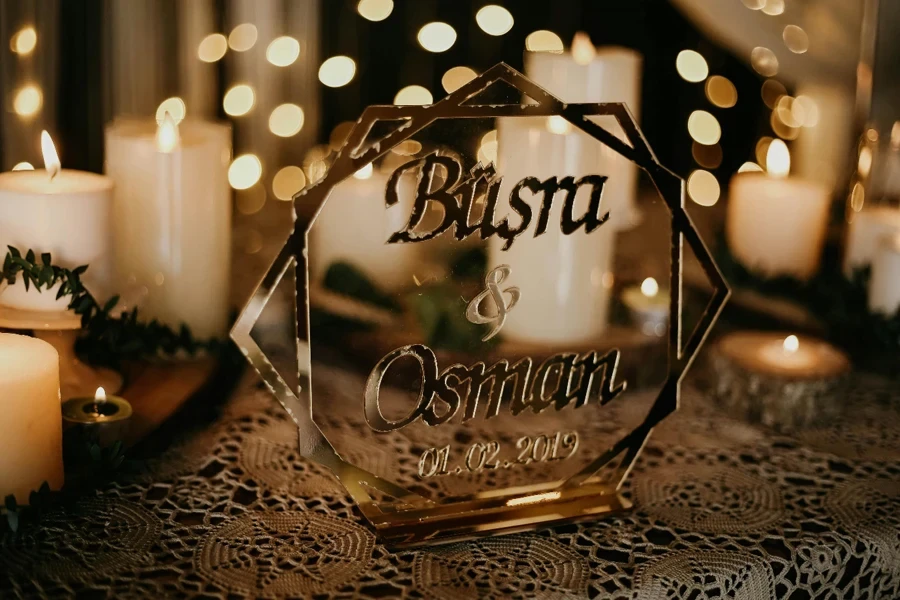
Chandeliers
Chandeliers are a classic choice for wedding lighting, offering a range of styles from glamorous to industrial and traditional. These fixtures often feature multiple light bulbs or candles arranged in intricate designs, creating a striking focal point in any venue. Modern chandeliers may include LED bulbs for energy efficiency and durability. They can be made from various materials such as crystal, metal, or glass, allowing for customization to suit different wedding themes. Their adjustable height and dimmable options add to their versatility, making them suitable for both high-ceiling ballrooms and intimate settings.
Market lights (Bistro/string lights)
Market lights, also known as bistro or string lights, are highly versatile and suitable for both indoor and outdoor weddings. Typically, these lights consist of large, round bulbs spaced evenly along a string, providing both functional illumination and decorative charm. They are available in various bulb types, including incandescent, LED, and Edison-style bulbs. The string length and bulb spacing can be customized to fit specific venue dimensions. Market lights are often used to create a canopy effect by draping them across ceilings or outdoor spaces, enhancing the romantic ambiance of the event.
Uplights
Uplights are designed to project light upwards, highlighting walls, columns, and architectural features. These lights are available in various color options, including RGB LEDs that can change hues to match the wedding’s color palette. Uplights typically have adjustable beam angles and intensity controls, allowing for precise placement and effect. They are often used to create dramatic lighting effects, such as washing walls with color or highlighting specific areas like the dance floor or sweetheart table. Their portability and ease of installation make them a popular choice for dynamic lighting designs.
Candlelight
Candlelight offers a cozy and intimate ambiance that is suitable for weddings. Traditional candles can be complemented with battery-operated LED candles to enhance safety and comply with venue regulations. Various candle holders, such as candelabras, votives, and lanterns, can be used to create different effects. The flickering flame of candles adds a warm glow that can be strategically placed on tables, aisles, and altars. For added safety and aesthetic appeal, floating candles in water-filled glass containers or hurricane lamps can be used, combining the beauty of candlelight with practical considerations.
Fresnel lanterns / gobo washes
Fresnel lanterns and gobo washes are advanced lighting solutions that add texture and visual interest to wedding lighting designs. Fresnel lanterns, commonly used in theaters, have a lens that produces a soft-edged beam, ideal for washes and spotlights. Gobo washes use patterned templates to project designs such as monograms, logos, or thematic shapes onto walls and floors. These lights often feature DMX control, allowing for synchronization with music and other lighting effects. The ability to customize gobo patterns makes them a unique option for personalizing the wedding environment.
Pendant lighting
Pendant lighting features single hanging fixtures that can be used creatively throughout the venue. These lights come in various styles, including industrial, vintage, and modern designs, and can be fitted with different types of bulbs such as LEDs or Edison bulbs for a nostalgic touch. Pendants can be suspended at different heights to create layers of light, enhancing the venue’s visual appeal. They are often used above dining tables, bars, or as focal points in lounge areas. The simplicity and elegance of pendant lighting make it a versatile choice for various wedding themes and settings.
Things to consider when selecting products
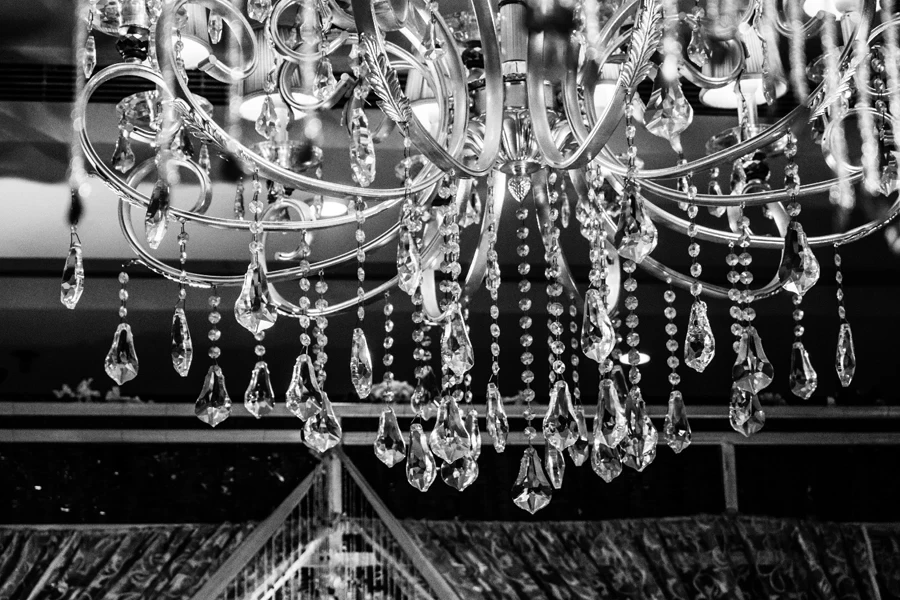
Budget considerations
When planning wedding lighting, it’s crucial to balance aesthetics with cost-effectiveness. Uplighting costs can range from $700 to $2,500 for comprehensive coverage, while gobo lighting fixtures may range between $200 and $500 each. Texture lighting fixtures typically cost $50 to $75. For larger venues, extensive use of string lights, priced at $3 to $5 per linear foot, can add up. Additionally, professional installation often costs more due to labor and expertise but ensures reliability and quality. Conversely, DIY installations may save on labor costs but could incur higher costs in time and potential errors, making professional assessment and cost-benefit analysis essential.
Venue requirements
Understanding the technical requirements of the venue is paramount. Venues vary in power capacity, so calculating the total wattage of all lighting fixtures is essential to prevent electrical overload. For instance, LED lights generally consume less power than traditional incandescent bulbs, making them a preferred choice for venues with limited power availability. Identifying the location and number of power outlets can influence the design and layout of the lighting setup. Additionally, it’s crucial to consider the existing ambient lighting and how new installations will complement or enhance these sources. Using wireless or battery-operated lighting can circumvent power limitations and increase flexibility.
Design and aesthetics
Matching lighting choices to the wedding theme and desired ambiance requires a nuanced understanding of both design principles and technical specifications. Chandeliers, available in various materials like crystal, metal, and glass, offer different light dispersal properties and visual impacts. Market lights, often featuring Edison-style bulbs, provide a warm, nostalgic glow ideal for rustic themes. Uplights, particularly those using RGB LEDs, offer dynamic color options that can be programmed to shift hues, creating a tailored atmosphere. The selection of lighting should also consider lumen output and color temperature to ensure the light quality aligns with the event’s mood.
Practicality and safety
Safety in lighting installations is non-negotiable, especially in venues with strict fire regulations. Open flames, such as candles, require careful placement and often need to be encased in fire-resistant holders. LED candles are a practical alternative, offering the flickering effect of real candles without the associated fire risk. Ensuring all fixtures are securely installed is critical; chandeliers and overhead lights should be anchored to support structures that can bear their weight. Additionally, all electrical connections should comply with local safety standards to prevent short circuits and electrical fires.
Customization and flexibility
Advanced lighting solutions offer significant customization to meet specific client needs. DMX-controlled LED lights allow for programmable lighting scenes that can be synchronized with music and other event elements. Gobo projectors can be customized with specific patterns, logos, or monograms, providing a personalized touch. The flexibility of wireless uplights enables quick repositioning to adjust to the changing dynamics of the event. Furthermore, the integration of smart lighting systems controlled via mobile apps allows real-time adjustments, enhancing the ability to adapt the lighting setup seamlessly during the event.
Conclusion
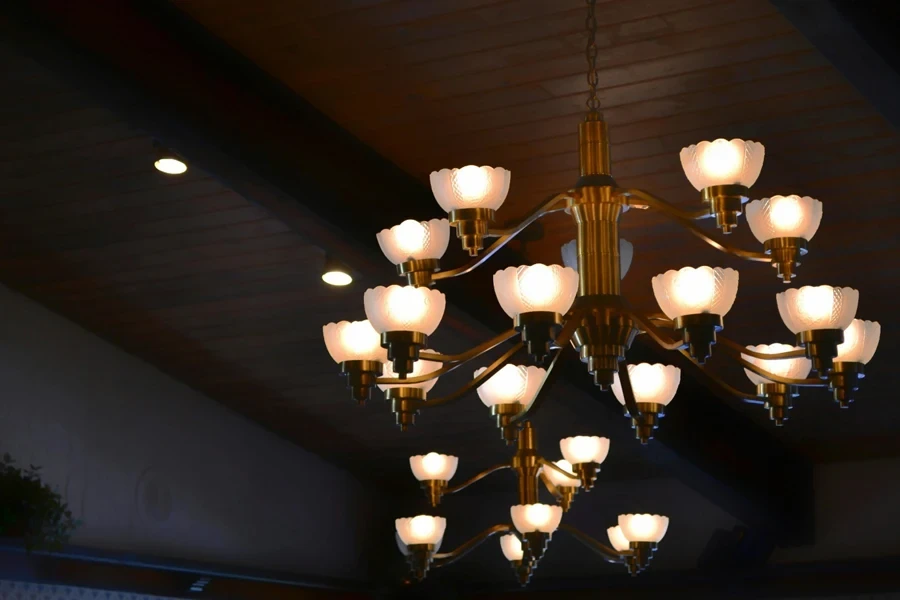
Selecting the right wedding lighting involves balancing budget considerations, understanding venue requirements, and aligning with the desired design and aesthetics while ensuring practicality and safety. Customizable and flexible lighting solutions, such as DMX-controlled LEDs and gobo projectors, can significantly enhance the wedding experience. By carefully choosing appropriate lighting types and ensuring safe, professional installations, the overall ambiance of the event can be elevated, creating a memorable and visually stunning celebration.
